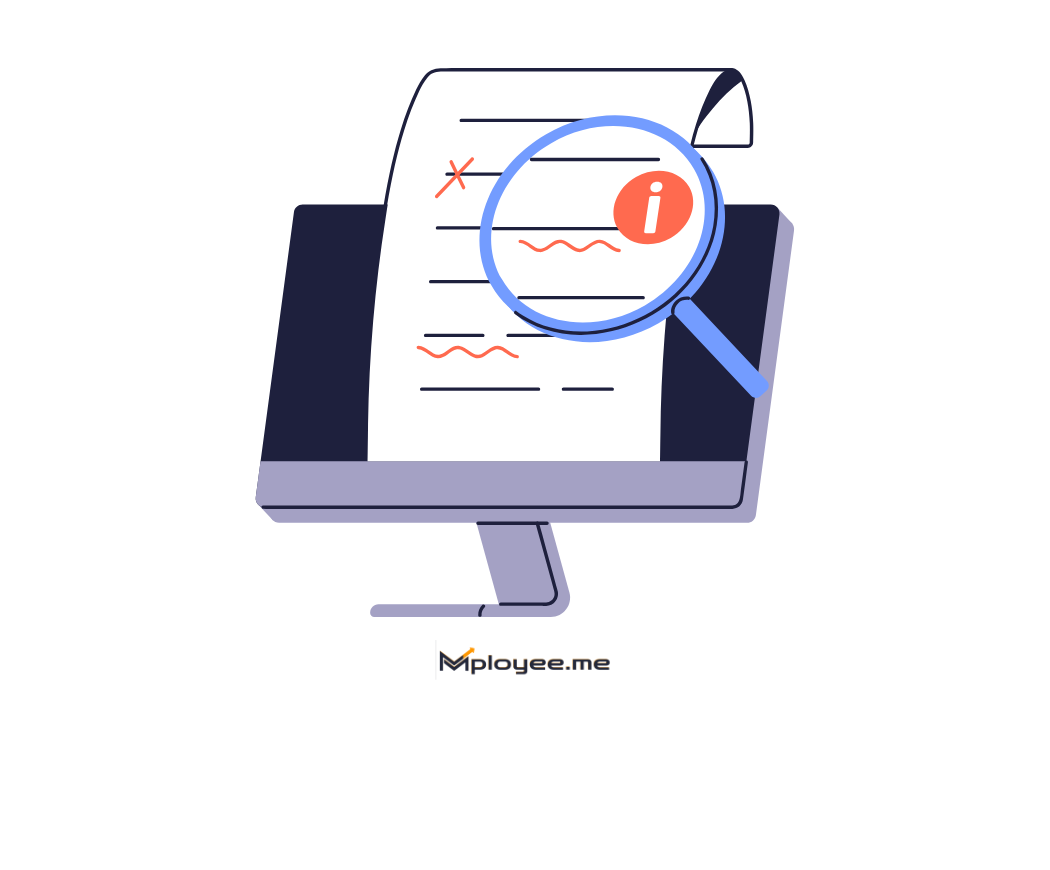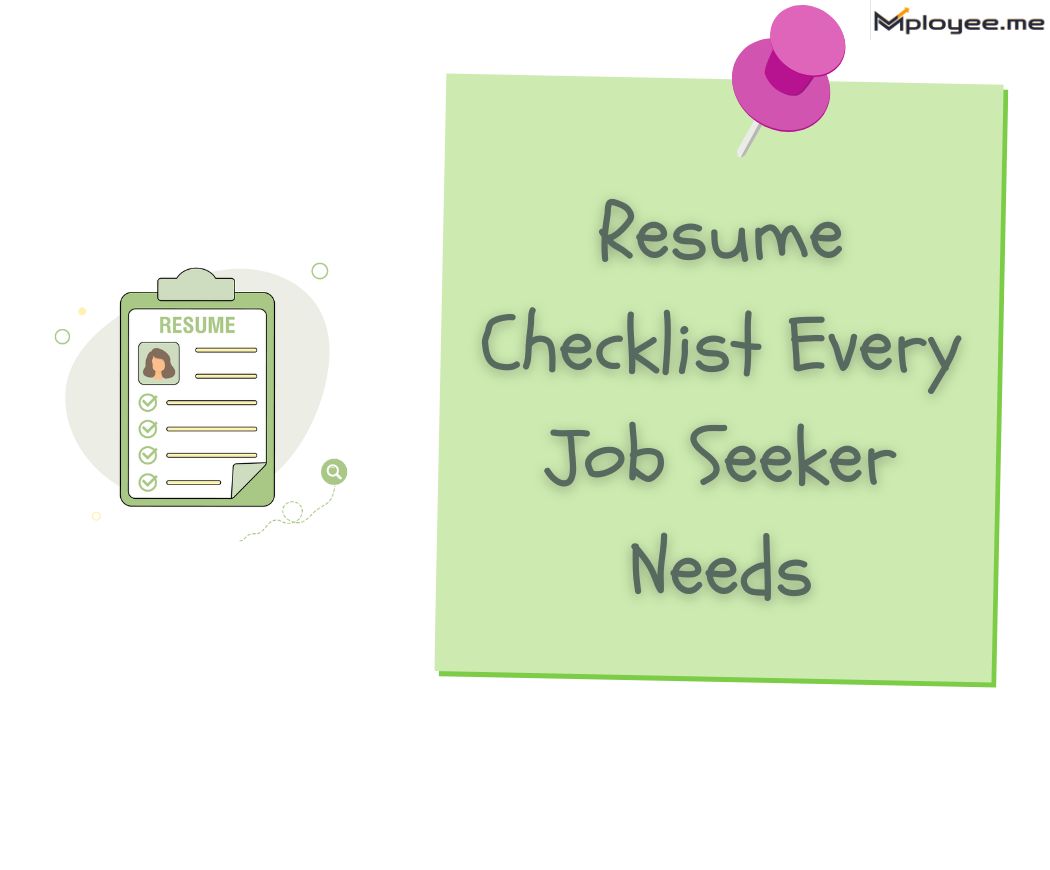
We'll cover
Craft an ATS Resume That Gets You Hired
Written by Editorial Team, Mployee.Me

Crafting a captivating resume is your first line of attack, a document that tells your professional story with impact. However, in the dynamic digital landscape of today, applicant tracking systems (ATS) are an additional issue to take into account. These strong software tools serve as gatekeepers, reviewing resumes before they are seen by a human. Don't worry, though! This doesn't mean your resume needs to become a robotic checklist. By understanding how ATS works and strategically incorporating the right elements, you can transform your resume into an Interview Magnet. This blog is your one-stop guide to building an ATS-friendly resume that gets you noticed by recruiters and propels you towards that coveted interview invitation. We'll break down what ATS is, unlock the secrets of keyword magic, and guide you through building a strong foundation with essential sections. But remember, while the ATS is the gatekeeper, the human element remains crucial.
We'll cover:
Understanding Applicant Tracking Systems
The modern-day job search is a fascinating dance between technological barriers and human interaction. You might be eager to showcase your skills and experience to land the perfect role but there's a barrier that you might need to impress first which is the Applicant Tracking System (ATS).
Think of the applicant tracking system (ATS) as a virtual hiring system. Employers use this software to speed up the hiring process by prioritizing resumes that most closely match the job description after sorting through hundreds of submissions. For this reason, the effectiveness of your job search depends on your knowledge of the ATS.
The ATS is often the first line of defence, scanning resumes for specific keywords and criteria before they reach a human recruiter. Your unique abilities and expertise could never be given the chance to shine if the ATS doesn't find a connection with your resume.
The ATS helps both employers and applicants equally, despite the fact that it may appear like an additional burden. In addition to saving recruiters time by concentrating on qualified candidates, it increases the likelihood that your resume will be placed in the "consider" pile if it meets the job specifications.
The ATS aids in minimizing bias during the first screening procedure by depending on pre-established criteria. This implies that regardless of your background, your qualifications have an equal chance of being discovered.
Using the application tracking system (ATS) effectively does not require your resume to be a word-for-word copy of the description of the job. It all boils down to finding the ideal ratio to exhibit your pertinent experience while retaining your uniqueness.

Decoding the Language of ATS for Faster Results
Now that you are familiar with the ATS, let's learn how to communicate with it! Finding appropriate search terms for the specific position you're applying for is the first step. Go over the job description thoroughly and make a note of the most important abilities, credentials, and experience that are stated. You should use these keywords consistently throughout your CV.
Don't just list keywords randomly throughout your resume. Incorporate them naturally into your Summary/Profile section, work experience descriptions, and skills section.
Many resumes skip this section, but it's prime real estate for keywords! Craft a concise overview (3-4 sentences) highlighting your skills and experience relevant to the job.
Building a Strong Foundation for Your ATS Resume
Now that you've unlocked keyword magic, let's build a strong foundation for your ATS-friendly resume. Here are some essential sections to include -
Contact Information: Should be clear, including your full name, phone number, and email address.
Summary/Profile: Here is your chance to shine with important keywords and a clear overview of your skills and experience.
Work Experience: Start with your most recent job position and then describe your other job experiences. Include the job titles, dates of employment, company names, and primary responsibilities. This is your golden chance to show off your skills with effective action verbs and quantifiable outcomes.
Education: Include educational background, the name of the institution, degree, and graduation year. Include relevant coursework or projects for recent graduates.
Skills: In a separate section, provide your hard and soft skills as well as any applicable skills. Technical aptitudes such as data analysis or software expertise are called hard talents. Interpersonal abilities including problem-solving, cooperation, and communication are known as soft skills.
Common ATS Myths
There are many misconceptions surrounding ATS.
Myth #1 - ATS Automatically Rejects Resumes with Typos.
While typos can be unattractive, most ATS prioritize keyword matches over minor errors. However, it's still crucial to proofread to present a professional image.
Myth #2 - ATS Only Looks for Keywords.
While keywords are important for initial screening, a good ATS also considers factors like relevant skills and experience listed in the job description.
Myth #3 - You Can "Fool" the ATS.
Keyword stuffing or using irrelevant keywords might get your resume past the initial scan, but it won't impress a human reviewer. Focus on genuine qualifications and achievements.
Myth #4 - ATS Discourages Creativity.
Although a well-defined structure is crucial, you may still be creative with your resume. Employ powerful verbs, persuasive phrasing, and accomplishments that speak to your special value.
Role of Resume Formatting in ATS Optimization
Now when you decide to write an ATS resume, resume formatting concerns the applicant tracking system (ATS) that processes the given features of the resume, and you should focus on it as having passed through the various parsers, high chances would be waiting for you. Well, these are key points:
Straightforward Layout: Your resume formatting is kept clean and straightforward-simple. Do not use fancy fonts, graphics, or complex layouts that might confuse the ATS since standard fonts likely include Arial or Calibri.
Clear Section Headings: Of course, your resume has clear, traditional headings such as "Experience," "Education," "Skills," and "Certifications." The ATS sorts this information by keywords.
Using Bullet Points: Provides organization to content and benefits ATS by scanning your ATS resume. Disregard long paragraphs that would be too difficult for the system to analyze.
Choice of File Format: Save your ATS resume in compatible file types like .docx or .txt. Some ATS may not be able to read PDF files if not properly formatted.
Keyword Optimized: The ATS resume should have the resume keywords against the job description-one should have them naturally throughout his resume writing: your work experience, skills section, and summary.
The resume can be formatted well, with keywords placed strategically. This way, it is less likely to be kept in the hands of the applicant tracking system and thus makes its way into a recruiter's inbox, making the resume an interview magnet.
Certifications and Online Courses to Improve Your ATS Score
It is well-known that certifications and online courses improve your ATS resume and consequently increase your chances of interfacing with potential employers via the interview. With the additional qualifications, applicants can give the ATS more phrases from their resumes that can be used to compare with keywords in job descriptions. Here are a few tips to consider:
Relevant Certifications: Any certification earned must go into an ATS resume. It shows specialized skills and knowledge that make the profile attractive to an applicant tracking system.
Online Courses: Online courses from such websites as Coursera, Udemy, and LinkedIn Learning can boost your resume. Most courses offered by these online learning sites have industry-relevant resume keywords. These keywords are picked by ATS thus improving your ranking.
Relevant Certification Tailoring: Go through the job description and add all the resume keywords related to that job. For example, project management skills highlight those project management certificate program-related items.
Dedicated Section Indicating Major Skills: Create a section on your ATS resume for certifications and online courses. This will make it easy for both the ATS and recruiters to find such qualifications quickly.
Boost up Your Professional Profile: Keeping adding new certifications and courses can be an effective way to show your commitment toward self-growth and to remain ahead of the competition in your field. It shows initiative and may count for something in your job search.
You are then actually leveraging certifications and online courses in organizing an ATS resume, making it more appealing and enhancing your chances of being called for an interview.
Making your Resume ATS Ready
One of the most important things to understand in today's job market is how to write an ATS resume. The fact that even one resume format is suitable for returning an applicant in an applicant tracking system alone does not mean it will reach a recruiter. It requires strategic use of diverse resume keywords and skills that match the need to make it stand out. Write your resume with obvious headings and optimize for ATS resume keywords; add qualifications through certifications and online courses, and you will be well on your way to a successful interview magnet. Indeed, a well-structured ATS-ready resume is the ticket to getting noticed and landing the job you have been eyeing for quite a while.

Got Your Answer ?
Learn this in 30 Seconds 👇
Career Blogs
Our career blog is your go-to resource for insightful advice, practical tips, and the latest trends in the job market.

Office Address: Room No 305, IIT ROPAR-TBIF, Top Floor (East Wing), M.Visvesvaraya, Rupnagar PB, 140001
- Free Online Resume Review
- Check Resume Score
- Job Description Keyword Finder
- Resume Shortlisting Software
- Resume Scanner for Jobs
- Find jobs that match with resume
- Job matching platform
- Resume job matching
- Job suggestion
- Best sites to find jobs
- Free ats resume scanner
- Auto apply for job
- Full Time Jobs
- I Need a Job
- Information Technology Jobs
Can't Find Something? Get in Touch.
©2025 Padhakku Peek A Book Pvt Ltd (Mployee.me)






